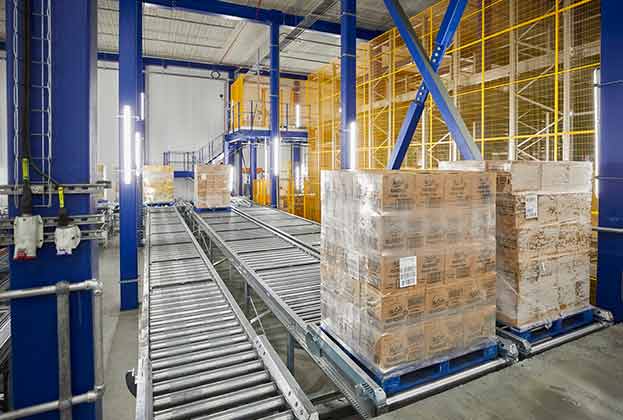A growth in demand for cold storage space is fuelling increased investment in the UK cold storage sector
Insulated walls and refrigeration systems are probably the only things that cold chain facilities have in common. Aside from these physical similarities the purpose to which buildings are put, the types of products they store and the customers they serve can vary greatly.
One major distinction is between the ‘private’ cold storage facilities that exist to serve an integrated supply chain; and the ‘public’ stores that provide storage services to a range of customers. ‘Private’ facilities could exist to service a manufacturer – often located alongside a manufacturing facility, or they could be a retail consolidation and distribution centre. ‘Public’ stores operated by a third-party logistics provider exist for the purpose of selling a logistics service to a range of customers on a combination of short- and long-term contracts.
Some cold stores are long-established, slow turning operations; others are modern, highly automated 24/7 operations, and everything in between. Some are located close to point of production or manufacture, others close to ports. Some exist to serve a national catchment area, others are located close to key customers.
This report comes at a time when the tectonic plates of our industry appear to be moving. After many years of a relatively static property market, a growth in demand is fuelling investment. Short-term factors like Covid-19 and Brexit have shown that there is not enough cold storage space in the UK market to cope with spikes in demand. However, it is the long-term indicators of the growing demand for frozen and chilled food and increasing UK exports which is driving overall growth.
Within the private chain, the need to respond to the dramatic growth in home delivery is creating a need for better located and designed facilities to deliver last-mile fulfilment.
The good news is not universal. Businesses particularly exposed to the food service market face a period of medium-term uncertainty. Also, big questions are starting to be asked about the suitability of older facilities for the future.
Ratcheting regulations on the use of HFC refrigerant gases, increasing energy costs and the threat of carbon taxes on emissions are all factors that reinforce the sense that this is an era of change.
This report provides a baseline for us to observe and measure the changes underway. The Cold Chain Federation will be a source of information, insight and advice for everyone interested in the future of this exciting sector within the industrial property market.

Methodology and Caveats
In order to ascertain what the current make-up of the UK cold chain sector is, The Cold Chain Federation has worked with leading property consultancy Savills to analyse data from a number of sources, including the Valuation Office, Savills in-house data, Cold Chain Federation data and other secondary sources.
We have examined data for warehouses over 50,000 sq ft and where possible verified the current tenant to provide analysis by industry sector.
Using data from the Cold Chain Federation has identified what part of the UK cold chain any companies fall into which has allowed us to undertake detailed analysis.
Using data from the Valuation office, however, does have certain time lags as properties may not enter the rating list until occupied. Moreover, Valuation Office data only covers England and Wales, we have therefore sourced data on Scotland and Northern Ireland from The Cold Chain Federation and verified using secondary sources.
Read the articles within Spotlight: UK Cold Storage Sector below.
.jpg)
